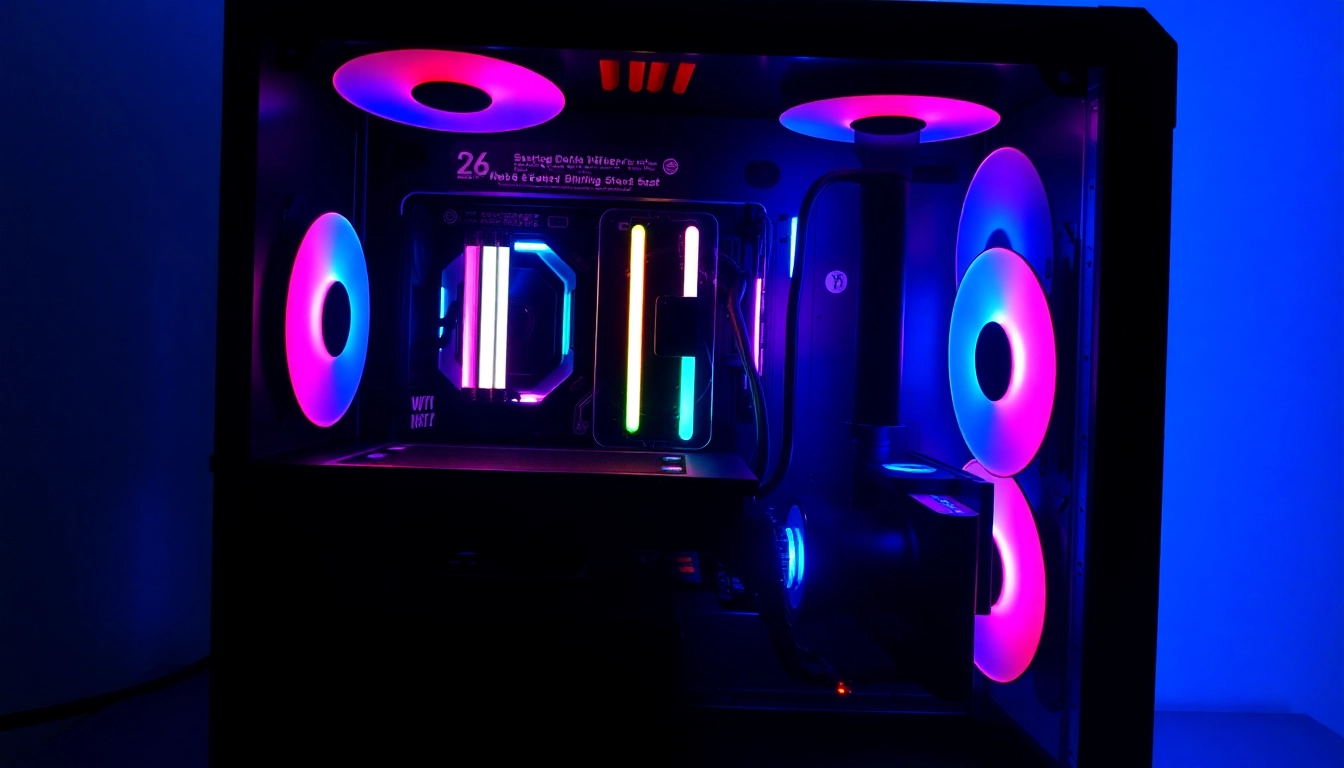Understanding the Basics of Website Design
What is Website Design?
Website design refers to the process of planning and creating websites. This encompasses a variety of aspects, including web page layout, content production, and graphic design. A well-designed website presents information in a way that is accessible and engaging, promoting a cohesive user experience. At its core, website design integrates various elements like structure, aesthetics, and functionality to meet the specific needs of users and organizations.
Key Elements of Effective Website Design
Effective website design incorporates various elements that work together. Key components include:
- Layout: This determines how information is organized visually. A clear and logical layout leads to improved user navigation and retention.
- Visual Design: Colors, fonts, and images should align with the brand’s identity while ensuring readability and user engagement.
- Content: High-quality, relevant content should be prioritized to fulfill user needs and attract search engine traffic.
- Functionality: The website should perform seamlessly on various devices and browsers, utilizing the latest technologies.
- User Experience (UX): A focus on UX enhances user satisfaction, encouraging interaction and retention.
The Importance of User Experience in Website Design
User experience is pivotal in website design, impacting how visitors perceive and interact with a site. UX encompasses elements like usability, accessibility, and overall satisfaction. Poor UX can lead to high bounce rates, while a focus on the user experience can enhance engagement, conversion rates, and overall success. To bolster user experience, designers must display empathy and cognitive understanding of their target audience’s needs and behaviors.
Planning Your Website Design Strategy
Identifying Your Website Audience
Before starting the design process, it’s essential to define your target audience. Identify their demographics, preferences, and behaviors to create user-centric designs. Conduct market research and user surveys to gather insights about what your audience is looking for and how they typically navigate websites.
Setting Goals for Your Website Design
Establishing clear, measurable goals can guide the design process. Whether aiming for increased sales, greater user engagement, or enhanced brand awareness, these objectives will inform design decisions. Consider SMART goals—Specific, Measurable, Achievable, Relevant, Time-bound—to ensure clarity in your objectives.
Choosing the Right Platform for Website Design
Your choice of web platform can impact design choices and functionalities. Options range from Content Management Systems (CMS) to static HTML sites. Evaluate which platform aligns best with your business goals, technical capabilities, and long-term plans. Popular options include WordPress, Joomla, and static site generators like Jekyll, each with unique pros and cons.
Designing for User Engagement
Creating Visually Appealing Layouts
The design layout serves as the visual foundation of any website. An appealing layout not only attracts attention but also guides users intuitively through content. Emphasizing alignment, contrast, repetition, and proximity in your design can create harmony and coherence. Use grid systems to ensure structural integrity across different devices.
Implementing Intuitive Navigation
Intuitive navigation is crucial for helping users find information quickly. Implement a straightforward menu structure featuring clear labels and logical groups. Consider adding a search function for added convenience, particularly for content-heavy sites. Include breadcrumb trails as secondary navigation to enhance exploration without overwhelming users.
Optimizing Content for Interaction
Interactive elements can significantly boost user engagement. Integrate features like quizzes, polls, or comment sections that encourage visitors to interact further with your content. Additionally, ensure that calls-to-action (CTAs) are clearly visible and effectively worded, providing users with the next steps and increasing conversion opportunities.
Advanced Website Design Techniques
Incorporating Responsive Design Principles
Responsive design is the practice of creating websites that provide optimal viewing experiences across a variety of devices and screen sizes. With the proliferation of mobile users, it’s vital to adopt responsive design principles to ensure that your website functions flawlessly on smartphones, tablets, and desktops. Utilize CSS media queries to adapt the layout, images, and content based on the user’s screen size.
Utilizing Visual Hierarchy Effectively
Visual hierarchy conveys the order of importance of content on a webpage. Implement size, color, and placement strategically to draw attention where needed. Headlines should be the most prominent elements, followed by subheadings and body text. Utilize whitespace to prevent clutter and guide the viewer’s eye to essential content.
Leveraging Color Psychology in Website Design
Colors evoke emotions and perceptions—understanding color psychology is crucial for influencing user behavior. For example, blue often implies trust, making it popular among financial institutions, while green is associated with environmentalism. Carefully select your color palette to align with your brand’s message and values while considering contrast for readability.
Measuring Success in Website Design
Key Performance Indicators for Website Performance
Measuring the success of a web design project involves the use of specific Key Performance Indicators (KPIs). Common metrics include page load times, bounce rates, conversion rates, and user engagement statistics. Utilize tracking tools like Google Analytics to monitor these KPIs and compare them against the objectives set in the planning phase.
Gathering User Feedback for Continuous Improvement
User feedback is invaluable for ongoing design refinement. Implement strategies such as surveys, feedback forms, and usability tests to gather insights directly from users. Analyzing this data can reveal pain points and areas for improvement, guiding your next design iterations to better meet user needs.
Adjusting Design Based on Analytics
Utilizing analytics allows designers to adapt to user behaviors and preferences. Regularly review data on website interactions to identify patterns and areas that require adjustment. Tools like heat mapping can reveal where users click and scroll, informing design improvements that enhance usability and engagement.



